| Title | Pages |
|---|---|
| Pollen Morphology of an Endangered, Endemic Anatolian Species, Noccaea aghrica (P.H.Davis & Kit Tan) M.Fırat & Özüdoğru (Brassicaceae) The material of this study is Noccaea aghrica Fırat & Özüdoğru, an endangered, endemic species, only known from three localities in eastern Turkey. The pollen grains of N. aghrica are usually prolate, isopolar, trizono- colpate, reticulate, and with the colpi almost running the full length and terminating at the poles. The average length and width of the pollens are 16.89 μm, 6.21 μm and for polar and equatorial axes are 20.94 μm and 18.89 μm, respectively. The pollen measurements and scanning electron microscope, light microscope photographs were given in the manuscript. 
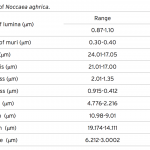
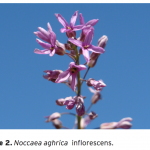

|
115 - 118 |
| Total Phenolic Content, Antioxidant and Antimicrobial Properties of Pleurotus ostreatus Grown on Lime (Tilia Tomentosa) Leaves In this study, the posibility of using of waste lime leaves in Pleurotus ostretatus cultivation was investigated. After a successful harvest, total phenolic content, antioxidant and antimicrobial properties of mushrooms was determined. According to the test results; yield was 15%, biological efficiency was 30%. The total phenolic content was 151.4±0.001 mg GAE/100 g, the antioxidant activity was 2,508±0.056 μmol FeSO4.7H2O/g. Additionally; methanolic extract of Pleurotus ostreatus mushroom showed inhibitory effect against Klebsiella pneu- monia and Acinetobacter haemolyticus bacteria. As a result, Tilia Tomentesa’s leaves are suitable raw material with satisfactory medical properties for the Pleurotus ostretaus cultivation. 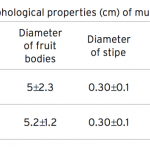
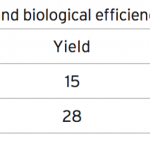
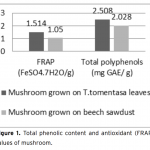
|
119 - 124 |
| Comparison of Leaf Traits (SLA And LMA) on Different Populations of Alcea apterocarpa In this study, we compared specific leaf area (SLA) and specific leaf mass (LMA) of Alcea apterocarpa (Fenzl) Boiss populations in different localities. SLA and LMA are important leaf parameters because they are re- lated to leaf nutrients, leaf economy and gas exchanges with atmosphere. So many species adjust leaf para- meters (i.e. SLA and LMA) across to environmental gradients. A. apterocarpa is a ruderal plant and has wide distribution area. Additionally it has got ethno botanic features for example use for medicine plant. We selec- ted six individuals form three different localities for this study. Each locality has different density of the human populations. We collected green and senescence leaves from localities and calculated SLA and LMA values of these leaves. The results showed that there are very important differences between senescence and green leaf and between localities. Especially, SLA values of A. apterocarpa population in city center are found to be higher and LMA values are found to be lower than other populations. 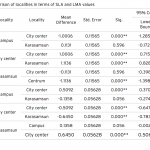
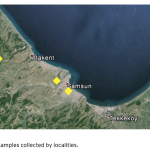
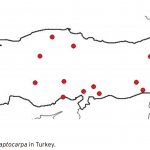
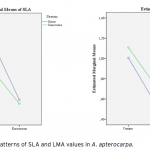
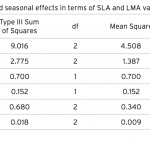
|
125 - 131 |
| Toxic Effect of Fenamiphos on the Earthworm, Eisenia fetida (Annelida: Oligochaeta) The aim of the present study was to investigate for the first time adverse effect of fenamiphos on the eart- hworm, Eisenia fetida. Earthworms were exposed to different concentrations of fenamiphos (5, 10 and 20 mg/kg). After 96 h, earthworms were euthanized and fixed. Histological alterations in earthworm’s body wall (epidermis, circular and longitudinal muscles), chloragogenous tissue and intestinal epithelium were asses- sed. Histopathological changes were more prominent in medium (10 mg/kg) and high-concentration (20 mg/ kg) groups than in the low-concentration (5 mg/kg) group. Degeneration in the intestine and integumentary system, as our results indicated after exposure to fenamiphos, are likely to interfere with the correct functio- ning of the intestine and integumentary system may affect earthworm survival. 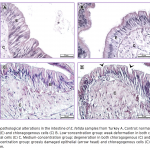
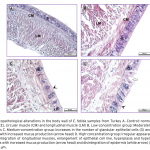
|
133 - 137 |
| Progressive Succession at Vegetation of Gölardı (Terme/ Samsun) Natural Protected Area In this study, it was determined that the progressive succession in Gölardı Natural Protected Area, (Terme/ Samsun) which is in the eastern part of Yeşilırmak delta plain, basically developed in hydroseral and psam- moseral processes and that it consisted of plant communities, six of which belonged to hydroseral succession main stages and three of which belonged to psammoseral successional main stages. 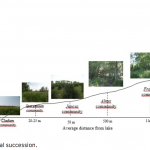
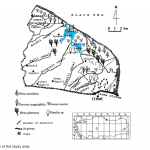
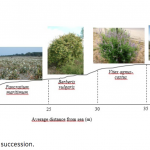
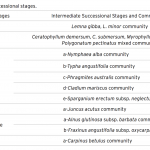
|
139 - 147 |
| The Situation of the Scoliidae (Hymenoptera: Vespoidea) in the Çukurova Region Scoliidae have biological and economical importance for collecting the larvae of Coleoptera which are harmful to the crops and fruits in order to provide food to their larvae. The aim of this study is the detection of the current situation of Scoliidae in the Çukurova Region by determination of the species and comparing with previous data. At the end of the study, 8 species and 2 subspecies were identified. A significant reduction in the number of species was detected in comparison with the previous data. It has been observed that the natural insect fauna is a small amount almost to nothing around the agricultural lands. Pesticides cause extinction of natural pollinator insects. More effective measures should be taken to protect the natural fauna. 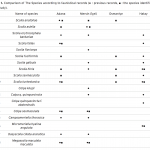
|
149 - 153 |
| An Investigation on Some Toxic Effects of Carbofuran on Daphnia magna (Crustacea, Cladocera) The aim of this study was to determine the median effective concentration (EC50) of carbofuran, a carbamate pesticide, for Daphnia magna and to evaluate the effects on the heart rate. In the experiment, five neonates (≤ 24 hours) were used for each negative control, solvent control (acetone) and the treatment groups. The treatment groups were exposed to five different concentrations (2.5 μg/L, 4.5 μg/L, 8.1 μg/L, 14.58 μg/L and 26.244 μg/L) of carbofuran (98%) for 48 hours. Immobilised daphnids were noted at the 24th and the 48th hour in both control and treatment groups. EC50 values were calculated by probit analysis as 33.814 μg/L and 3.451 μg/L for 24 and 48 h, respectively. At the end of the 48th h, all samples were observed by light micros- copy and the heart beats per minute (bpm) were counted by using a video camera. Heart rate was similar in negative and solvent control groups (444.8±24.12 and 458.4±34.14, respectively). In the treatment groups heart beats were noted as 498.4±17.43, 183.8±103.83, 441.6±35.73, 293.8±101.09 and 442.4±32.94 for 2.5, 4.5, 8.1, 14.58 and 26.244 μg/L, respectively. These results show that carbofuran caused immobilisation and decreased heart rate in D. magna. However, heart occured independently of carbofuran concentration gradient. 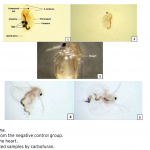
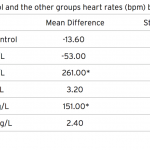
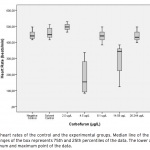
|
155 - 160 |
| Effects of Grazing on Soil Parameters in Meadow Ecosystems This study was carried out to determine the effects of grazing on soil parameters in the meadow ecosystems in the alluvial delta plain of Samsun-Turkey. Five 5×5 m exclosures were established in the homogeneous stands in terms of habitat conditions and floristic composition in the study area during 2000-2003. The top of soil was firstly removed and then soil samples were taken from inside and outside of exclosures at a depth of 20 cm in each month for a year. Soil organic matter, pH, nitrogen, phosphorus, potassium, CaCO3 and total salinity were measured by standard methods. In general, CaCO3 and total salinity exhibited statistically significant differences between the grazed and ungrazed parts. 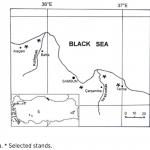
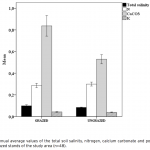
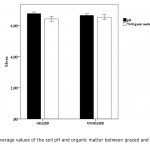
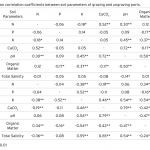
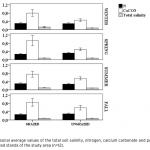
|
161 - 171 |
| Morphological Properties of Nannospalax (Rodentia: Spalacidae) Distributed in North-Iraq The materials of 11 specimens of mole-rats (Nannospalax) were collected from three different localities in North Iraq. The specimens were studied in respect to their morphological characteristics in detail. Some taxonomic peculiarities and measurements of body and skull have been investigated. The data obtained from the specimens were compared with the results of the previously published accounts. The results show that morphological peculiarities between the studied populations in North Iraq show great similarities. We therefore conclude that the North Iraqi population can be morphologically classified as Nannospalax ehrenbergi. 
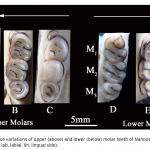
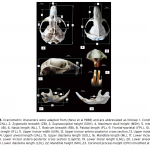
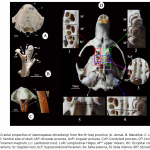
|
173 - 179 |
| A New Record for Flora of Turkey; Artemisia oliveriana J.Gay ex Besser (Asteraceae) Artemisia oliveriana (Asteraceae) is described as a new record to the Flora of Turkey (C9, Hakkâri). Detailed morphological description, photos, distribution map of this new record has been given. 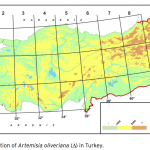
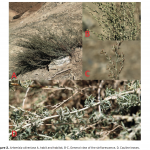
|
181 - 184 |
| Dolphins Inhabiting in Black Sea and Effects of Fisheries Dolphins are the most important members of the marine mammals which undergo a decrease in population for many reasons such as overfishing, habitat degradation, maritime / traffic and pollution. Biodiversity in the Black Sea is low mostly due to the geographical isolation and low salinity, high hypoxic amount and anoxic bottom waters of 100-250 m depth as well. Therefore, only the three dolphin species; the harbour porpoise (Phocoena phocoena), common dolphin (Delphinus delphis) and bottlenose dolphin (Tursiops truncatus) live in the Black Sea region. This study is about harbor porpoise, short-beaked dolphin and bottlenose dolphin living in the Black Sea . The results of the scientific researches and publications focusing on these species are scanned and gathered together. The biological characteristics, ecological requirements and habitats of these species are reviewed, effect on both ecosystem and fisheries are evaluated. Many species of the marine mam- mals are negatively effected by anthropogenic factors and as a result given in the Red List” by the the World Conservation Union (IUCN) where; Delphinus delphis is stated as least compromised (LC), he Mediterranean sub-population is stated as endangered (EN), Phocoena phocoena is stated as least compromised (LC), Tursiops truncatus is stated as least compromised (LC) and Mediterranean subpopulation of Tursiops truncatus is stated as sensitive (VU). Unintentional catch of dolphins, mostly resulting in death or killing of these species, by turbot nets having 280-360 mm mesh size is one of the leading anthropogenic factors. Besides, dolphins’ stealing fish particularly from the bottom gillnets with 32-44 mm mesh size and destroying these nets have a negative impact on fishing. In many parts of the world, many studies were perfomed to prevent unintentional catch (bycatch) of the dolphins and to keep away the dolphins from the nets in order to prevent fish stealing (depredation) and damaging of the nets. Studies have also been carried on focusing on the unintentional catch (bycatch) of dolphins in the Black Sea region, however researches particularly on acoustic dolphin repellents are very limited. |
185 - 192 |
| Sustainable Use of Water in Urban Design Urban ecosystems have changed considerably nowadays, due to increasing population growth and dense settlements. These changes have caused the depletion of resources and disruption of natural balance. ‘’Water Efficient Urban Design’’ or “Sustainable Urban Drainage Systems” are the most important approaches in order to prevent the most vital resource, water to reach a point where it is exhausted. In this study, the aforementioned approaches are explained and examples around the world are discussed. 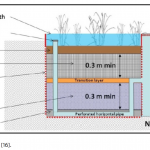
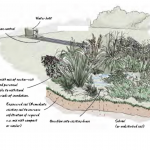
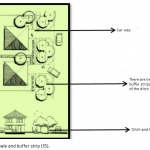
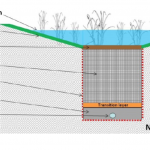
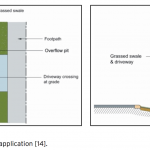
|
193 - 203 |
| The Effect of Natural Zeolite Clinoptilolite on Aquarium Water Conditions Determination of the effects natural zeolite clinoptilolite on the aquarium water conditions was assessed in this study. For this purpose 2 different applications were performed. For the first application 7 grams of zeolite (Z7) was put to aquarium directly and for the second application same quantity of zeolite was put inside a net bag (NZ7) and placed in the aquarium. The third group was described as the control group without zeolite (C). Equal amounts of fish feed were added into the aquariums of the three groups and data on water quality parameters (temperature, pH, NH3, TAN) were collected for 12 days. At the end of the trial, level of ammonia which increased in proportion to time was lower in groups with zeolite after day 4, compared to the control group. While no statistical difference was found among mean water temperatures of trial groups (P>0.05), it was found that the difference between pH and ammonia levels was significant (P<0.05). 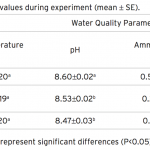

|
205 - 208 |